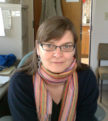Ultrasonic whistle in mice bypasses vocal cords
will.ferguson
Researchers at Washington State University Vancouver have discovered that mice make ultrasonic sounds by using their windpipes as whistles, avoiding the use of their vocal cords entirely. This has implications for studies of the human brain and speech.
Researchers have never seen an animal make sound this way, said Elena Mahrt, a WSU Vancouver biological sciences graduate student and lead author of a paper out this week in Current Biology. Mahrt, who defends her doctoral dissertation next month, did the research with Christine Portfors, associate professor in biological sciences, and researchers from the University of Washington, University of Southern Denmark and University of Cambridge.
Find out more



